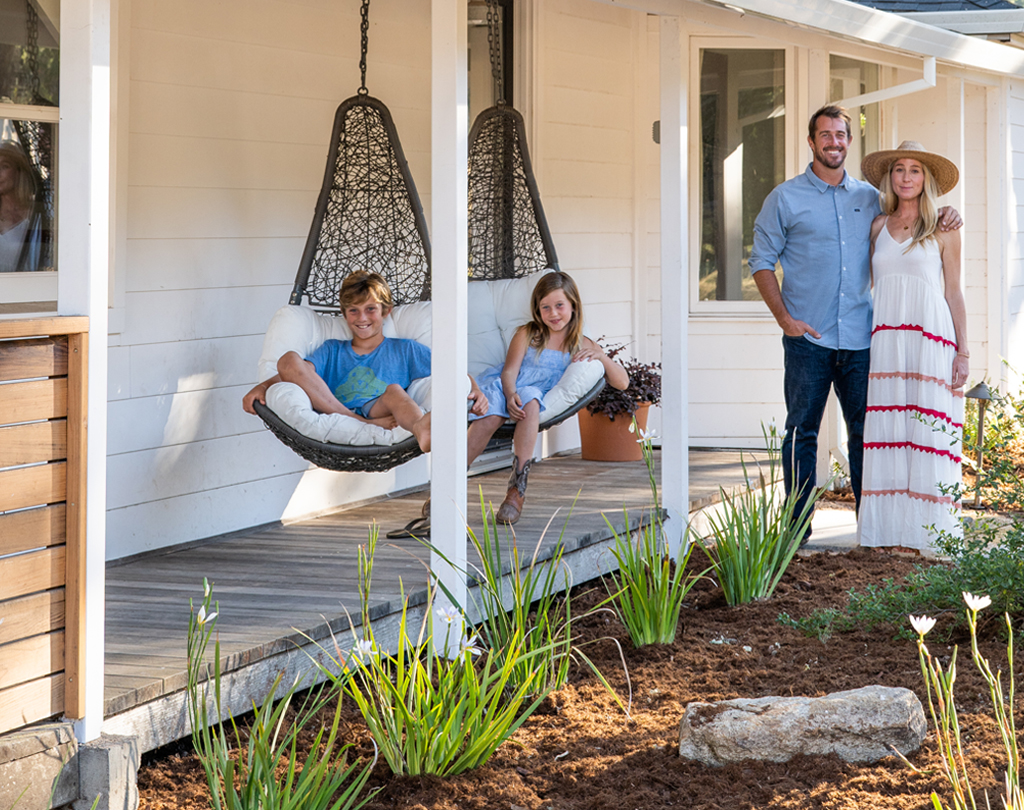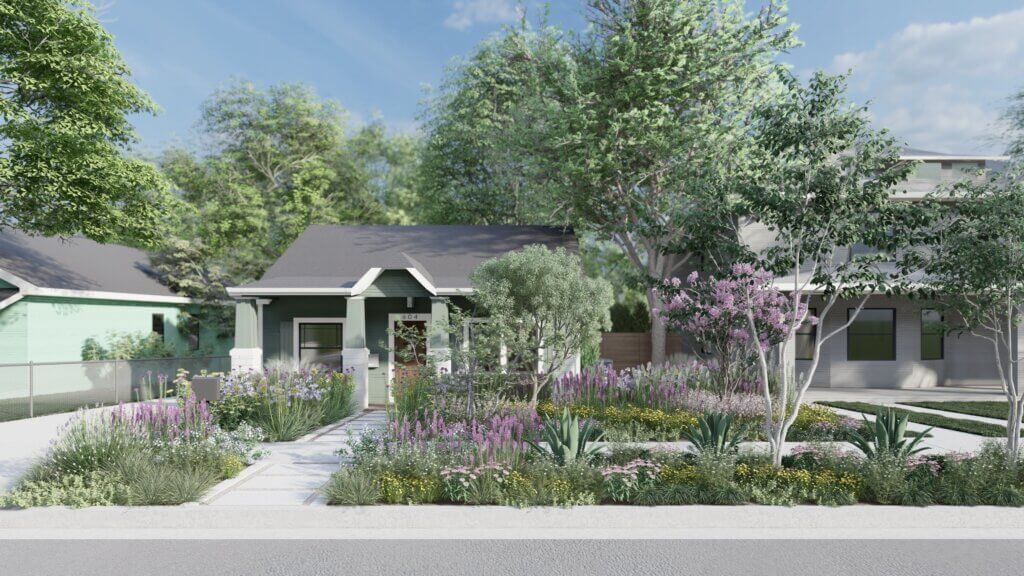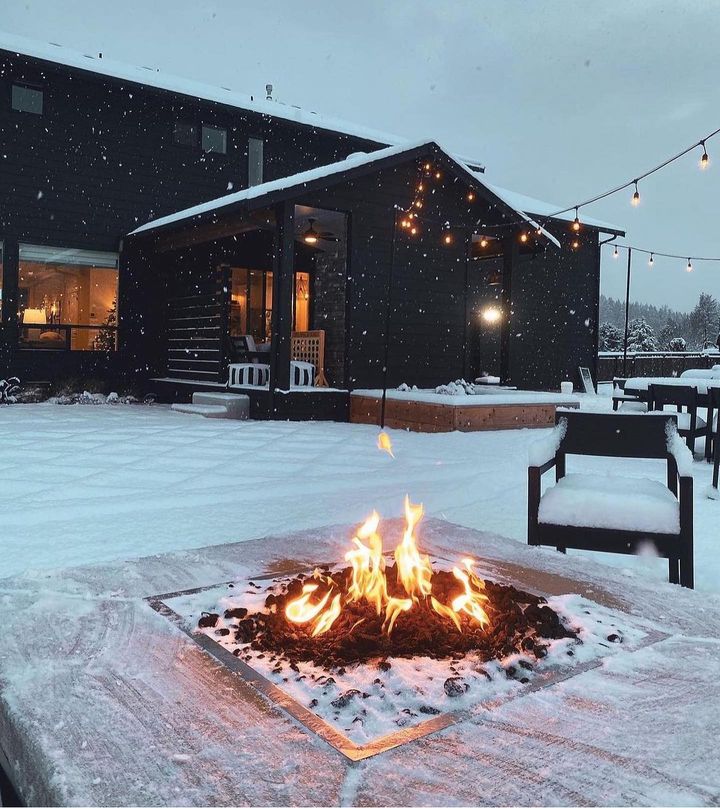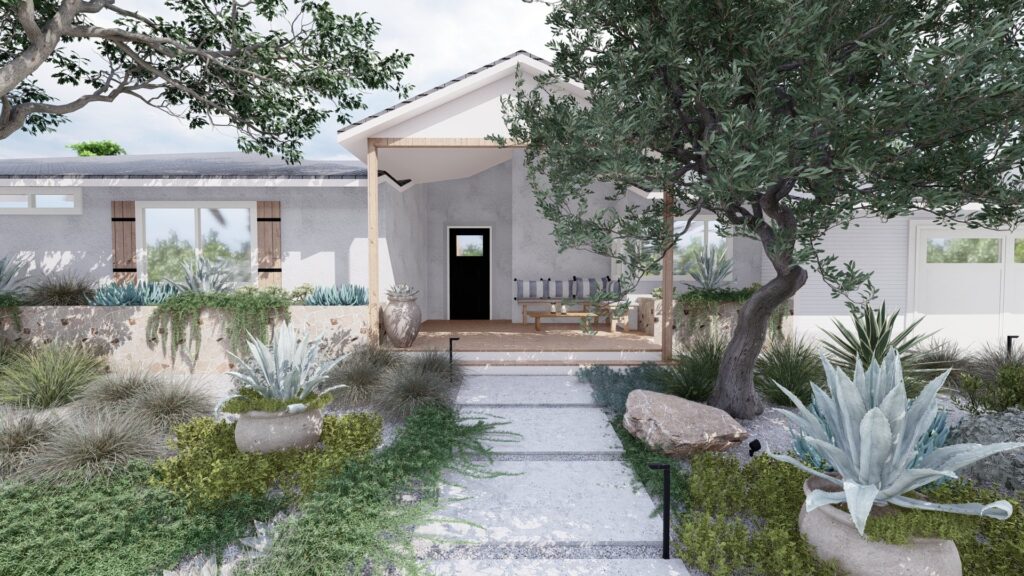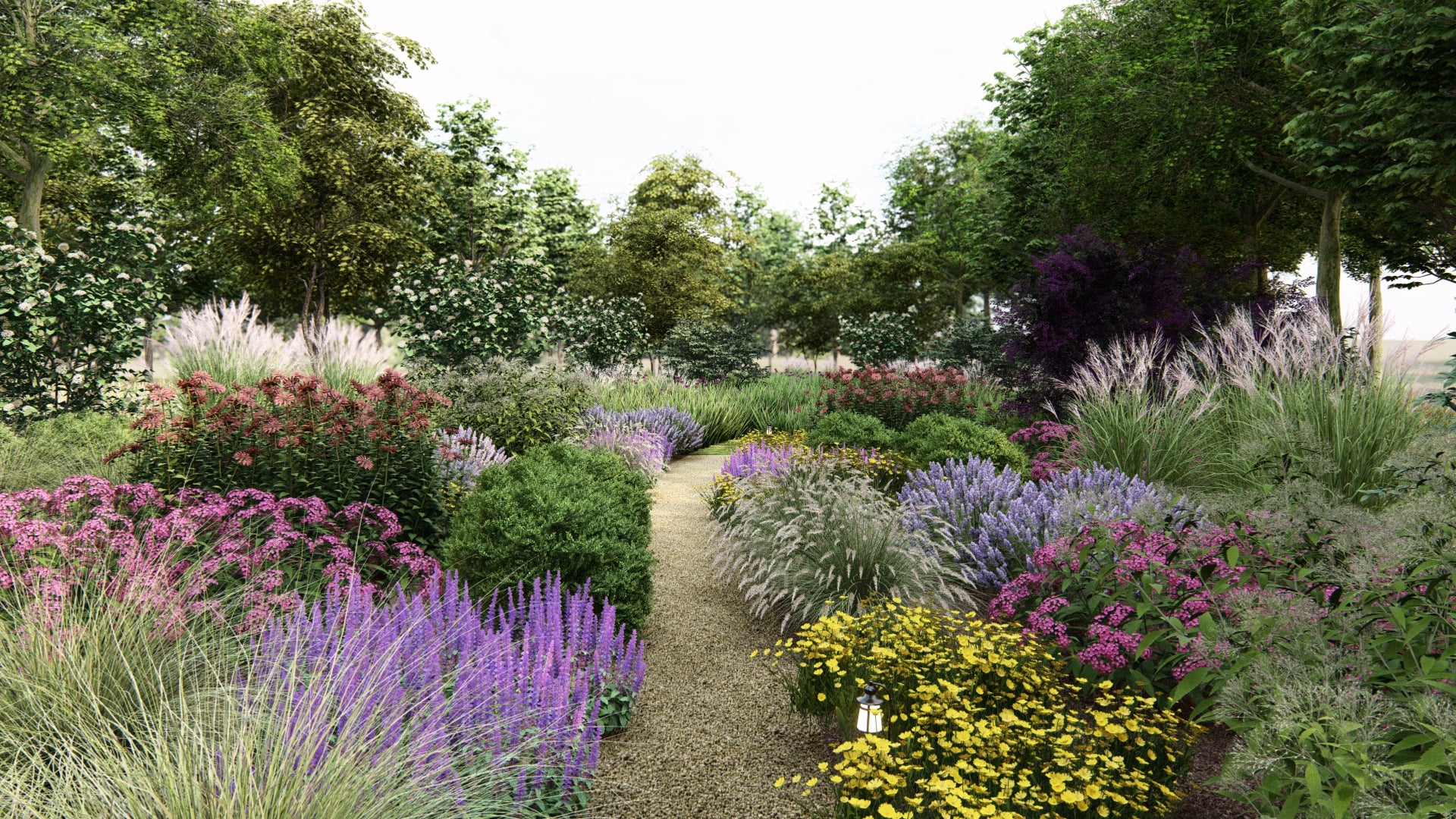
Brightly-colored flowers are the first thing most people think of when picturing a pollinator-friendly garden. And while they can be an effective way to entice pollinators to do a quick fly-by, flowers are only one part of the equation. There are several other (simple!) strategies you can employ in your outdoor space to encourage a variety of pollinators to call your garden home and to support local pollinator populations.
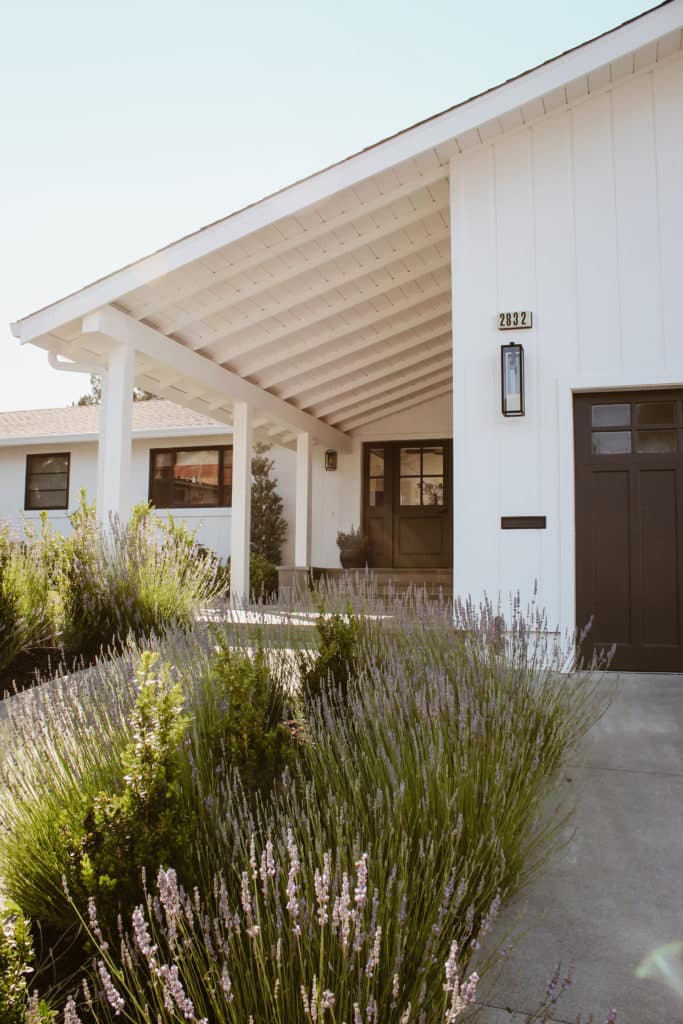
Who are pollinators and why are they important?
We’re all familiar with butterflies and bees as pollinators, but did you know hummingbirds, moths, beetles, wasps, hoverflies, ants, and bats can be pollinators, too? Each of these creatures visit flowers in search of nectar or pollen and in doing so inadvertently transfer pollen from one flower to another, resulting in pollination. Higher rates of pollination are associated with higher yields in flowering plants. This means more fruit and seeds are produced, feeding animals and people. In fact, about a third of food crops worldwide rely on insect-mediated pollination to increase yields (here is a partial list of crops paired with their associated pollinators).
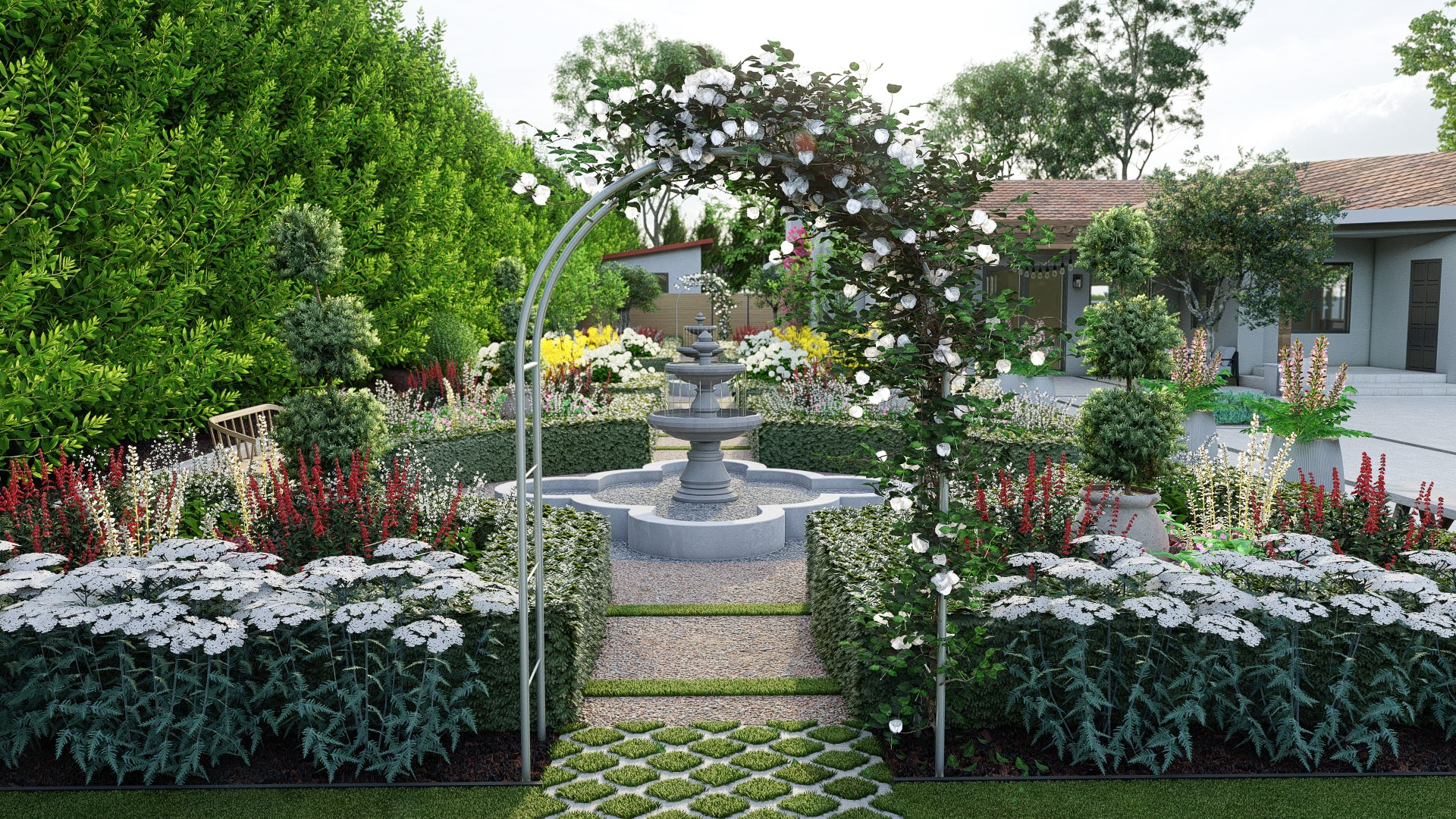

Many popular backyard food crops also rely on insect pollinators for a bountiful harvest. Apples, pears, stone fruit (peaches, nectarines, plums, apricots, cherries), blueberries, cane berries (blackberry, raspberry), melons, and squash won’t set fruit without the help of insect pollinators. Even when plants don’t rely on insects for pollination, their yields are higher when insect foraging activity is increased. Attracting pollinators to your garden is a no-brainer if you grow your own fruit, herbs, or veggies!
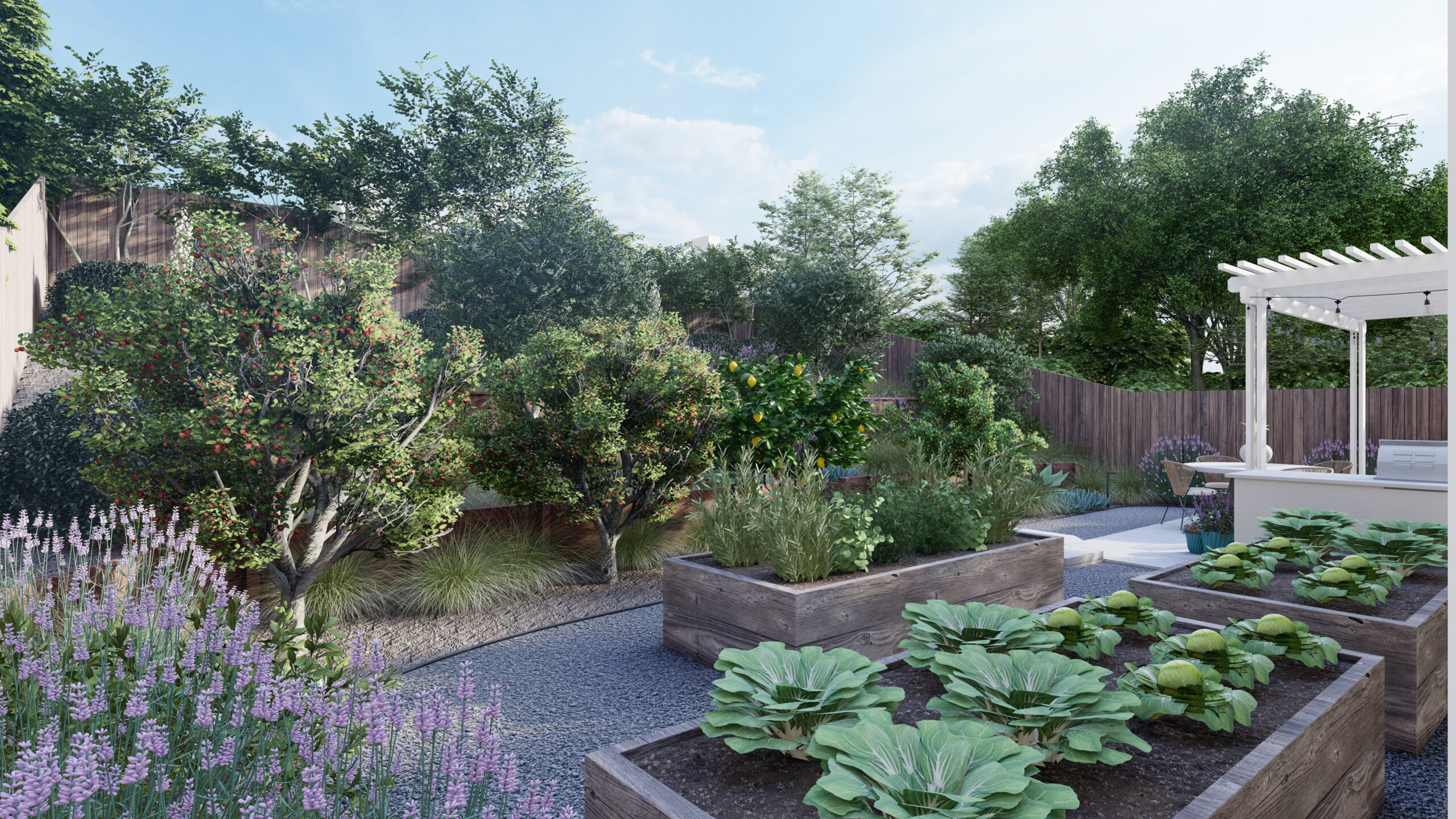
Native plants for specialist pollinators
When creating a plant list for your pollinator garden, you want to include those with highest ecological value as far as providing habitat for pollinators and other beneficial insects—and native pollinator plants rank highest for this criteria by far.
Native plants and their pollinators have formed complex relationships with each other over millennia, so much so that many pollinators specialize in pollinating just one small group of related plants, and sometimes only one species. These pollinators are known as specialists, while pollinators that aren’t particularly picky about the plant species they forage from are called generalists.

About a third of North American native bees are specialist pollinators of native plants. Some of the most important plant groups for attracting native bees include perennial sunflowers (Helianthus), goldenrod (Solidago), aster (Symphotrichum), and blueberries (Vaccinium).
Monarch butterflies are another well-known specialist, relying on plants in the genus Asclepias (also known as milkweed) as host plants for their offspring. Monarch caterpillars are specialists on milkweed, while adult Monarchs are generalists – feeding on nectar from a variety of flower species. Check out the Xerces Society’s regional guides on milkweed species to find locally-native milkweed species to provide forage for endangered migratory Monarch caterpillars.

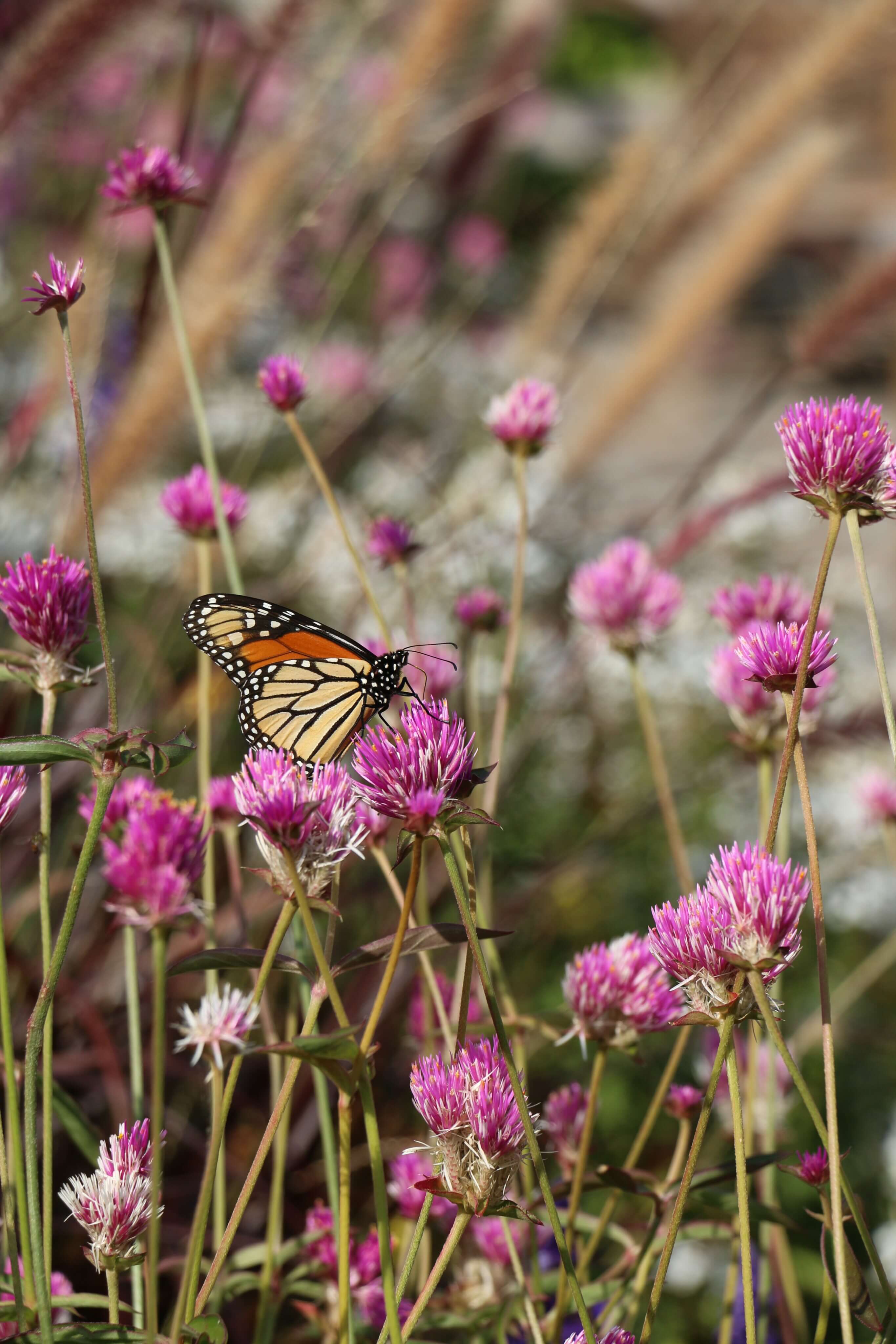
Planting a variety of native plants will help attract the most diverse group of pollinators to your garden. Use the National Wildlife Foundation’s Native Plant Finder to find native plants, and the pollinators they host, specific to your zip code.

Floral attributes can appeal to different pollinators
Flower shape
Pollinators visit flowers in search of food in the form of protein-rich pollen, sugary nectar, or both. Flower shape often dictates the types of pollinators that can access these resources.
- Flowers with a tubular shape (honeysuckle) or nectar spurs (columbine, nasturtium) cater to pollinators with long tongues like hummingbirds, moths, and butterflies
- Pollinators like hoverflies and bees that need to land in order to feed prefer flowers with large, open centers (asters) or flat-topped flower clusters (yarrow, Sedum) that provide a large landing pad
- Hummingbirds feed while hovering in mid-air, so can easily access pendulous flowers (Fuchsia, bleeding-hearts)
- Some flowers (lupine, snapdragons, foxglove) open up when a heavy insect lands on their lip, making them a favorite of bumblebees
Pro Tip: Plant an assortment of flowers with different shapes to attract a wider range of pollinators!
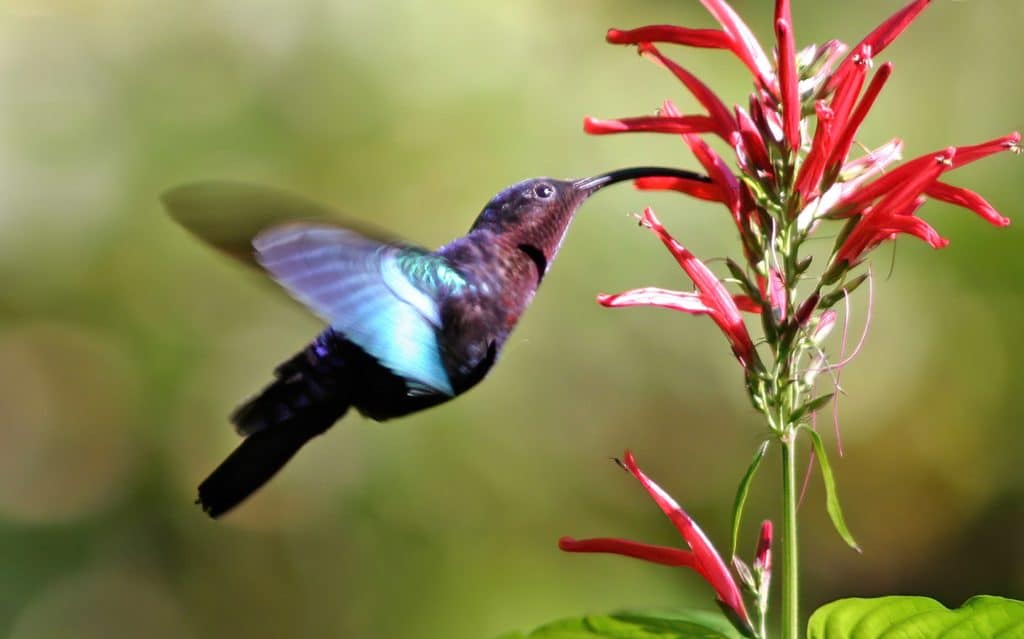
Color and scent
Some pollinators are known to prefer specific flower colors or patterns. Include these hues to attract members from each group:
- Hummingbird feeders are traditionally red in order to mimic this pollinator’s favorite color
- Bees are most attracted to purple, yellow, and white flowers and have trouble seeing the color red
- Butterflies love bright red, yellow, or orange flowers, as well as pinks and purples
- White flowers are easier to find in the dark and so will appeal to crepuscular (active at dusk) and nocturnal moths
- Hoverflies are thought to prefer white and yellow flowers
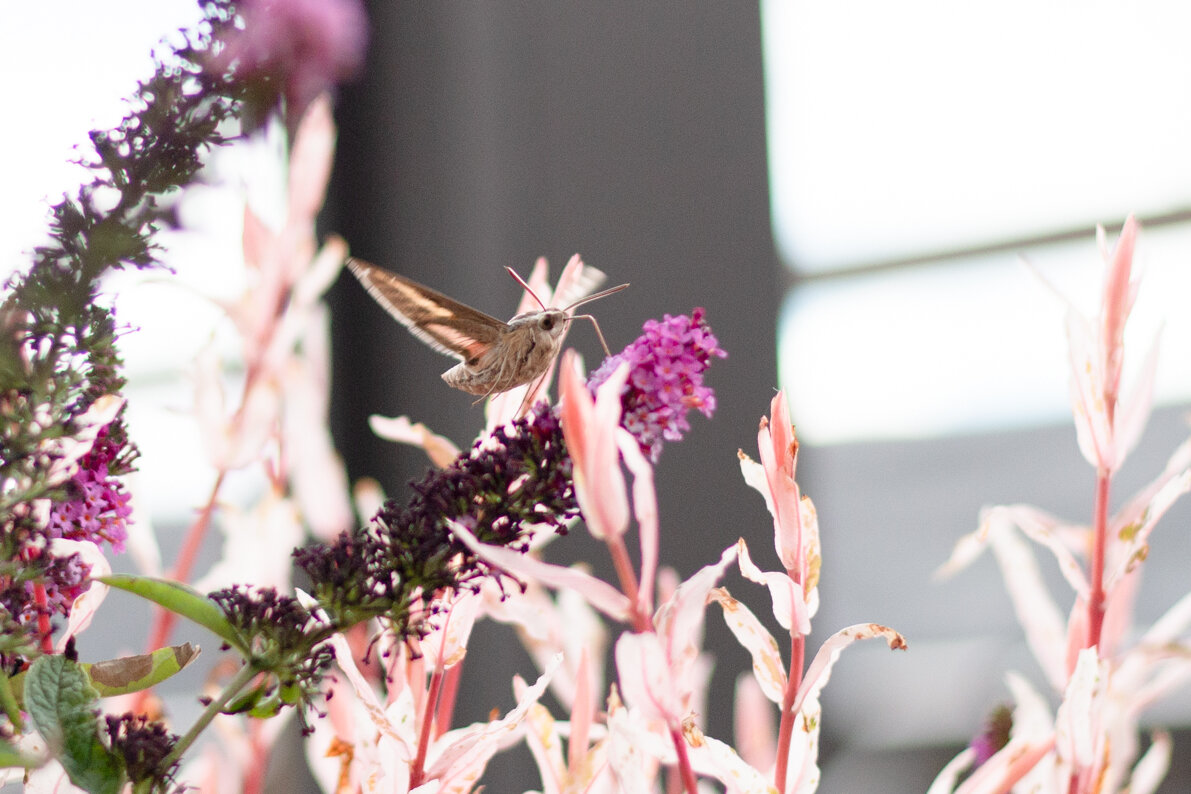
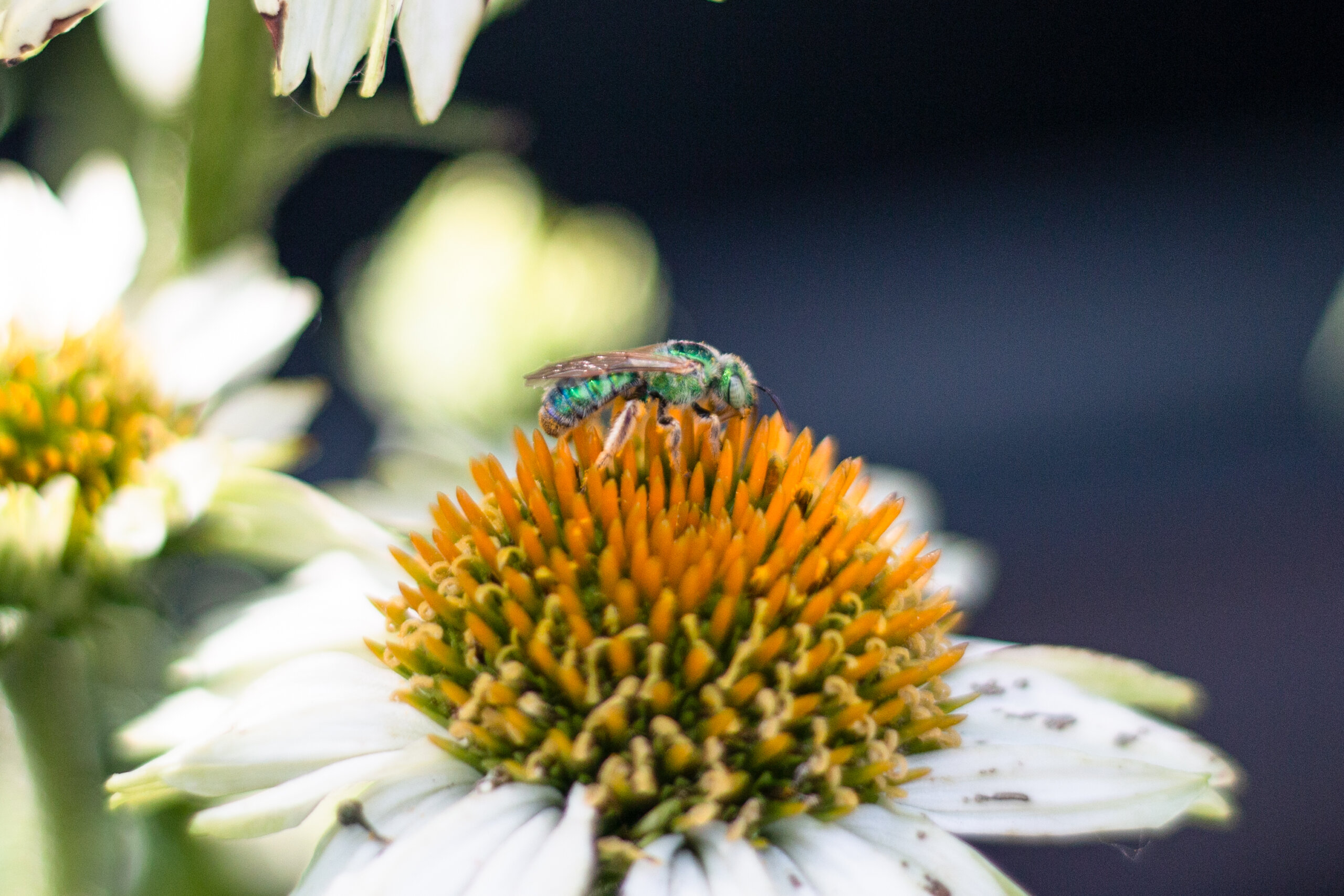
Bees, hummingbirds, hoverflies, and some moths can see beyond the visible color spectrum into the ultraviolet (UV) range, which flowers take advantage of by utilizing invisible nectar guides. Visible nectar guides in the form of dark spots or stripes may also indicate the presence of floral nectaries.
Flowers that attract butterflies, moths, and bees are more likely to be scented than those that attract hummingbirds (birds have a less developed sense of smell). Flowers that bloom in the evening are also more likely to be scented, as well.
Pro Tip: You can create a “moon garden” for people to enjoy by using plants with white flowers and grey or variegated foliage.
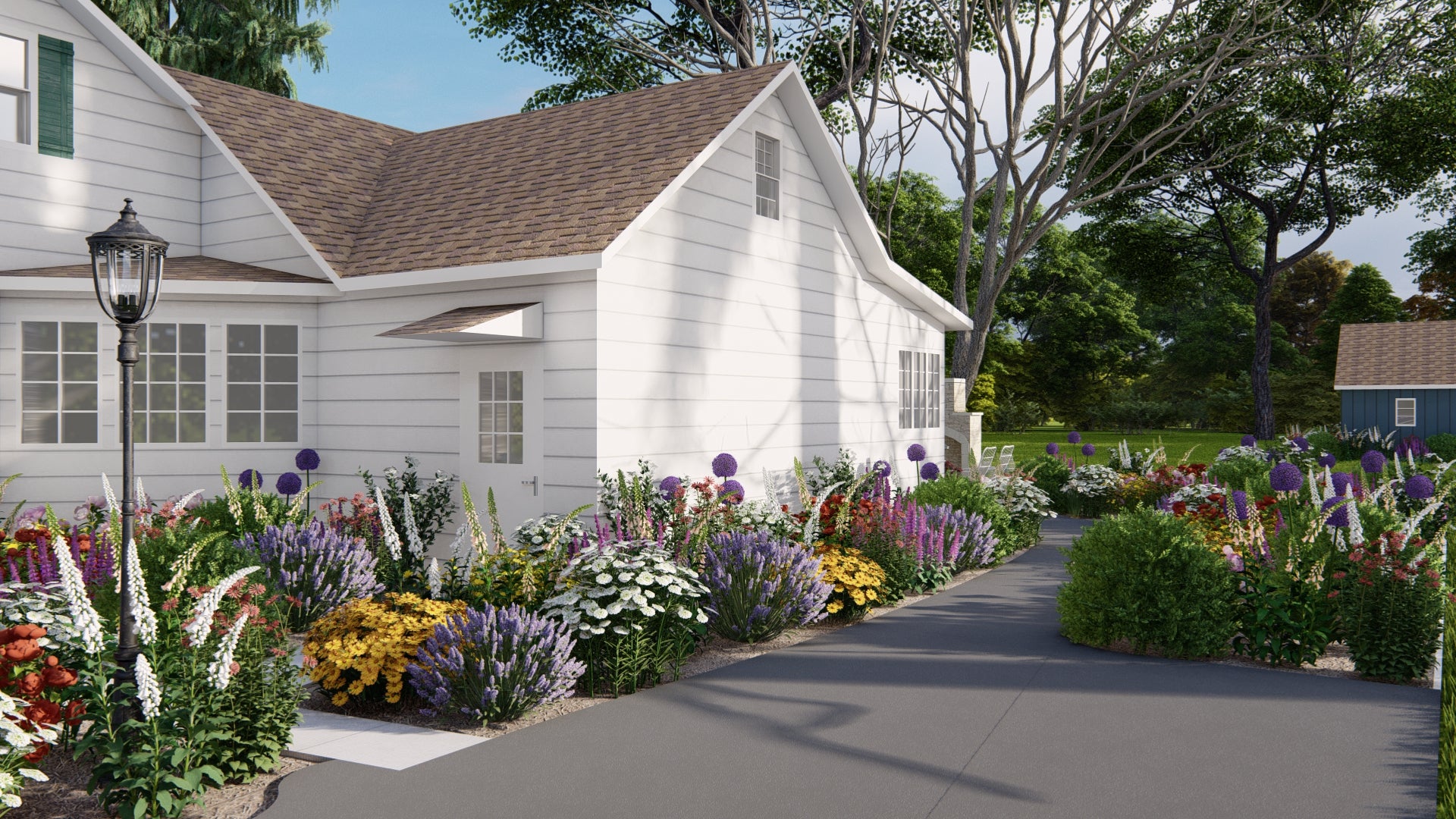
Extend the bloom season
Make sure your garden remains attractive to pollinators throughout the year by planning for sequential blooming – meaning when one species nears the end of its bloom cycle, one or more new species is just beginning to flower. This ensures there are always floral resources available for pollinators.

Early spring blooms are especially important for native bees, which tend to emerge earlier in the year when relatively few flowers are blooming. Powerhouse plants to support these intrepid early pollinators include native maples (Acer), willow (Salix), and serviceberry (Amelanchier). In the Southwest, manzanitas (Arctostaphylos), creosote bush (Larrea tridentata), and mesquite (Prosopsis) are important forage for early native bees.
Round out the selection with these floriferous late summer and fall bloomers: asters (Symphyotrichum), goldenrod (Solidago), stonecrop (Sedum), joe pye weed (Eutrochium) and perennial sunflowers (Helianthus).
Pro Tip: The seed heads from these blooms are a valuable food source for birds. Consider delaying deadheading and seasonal pruning until the stems are picked clean!
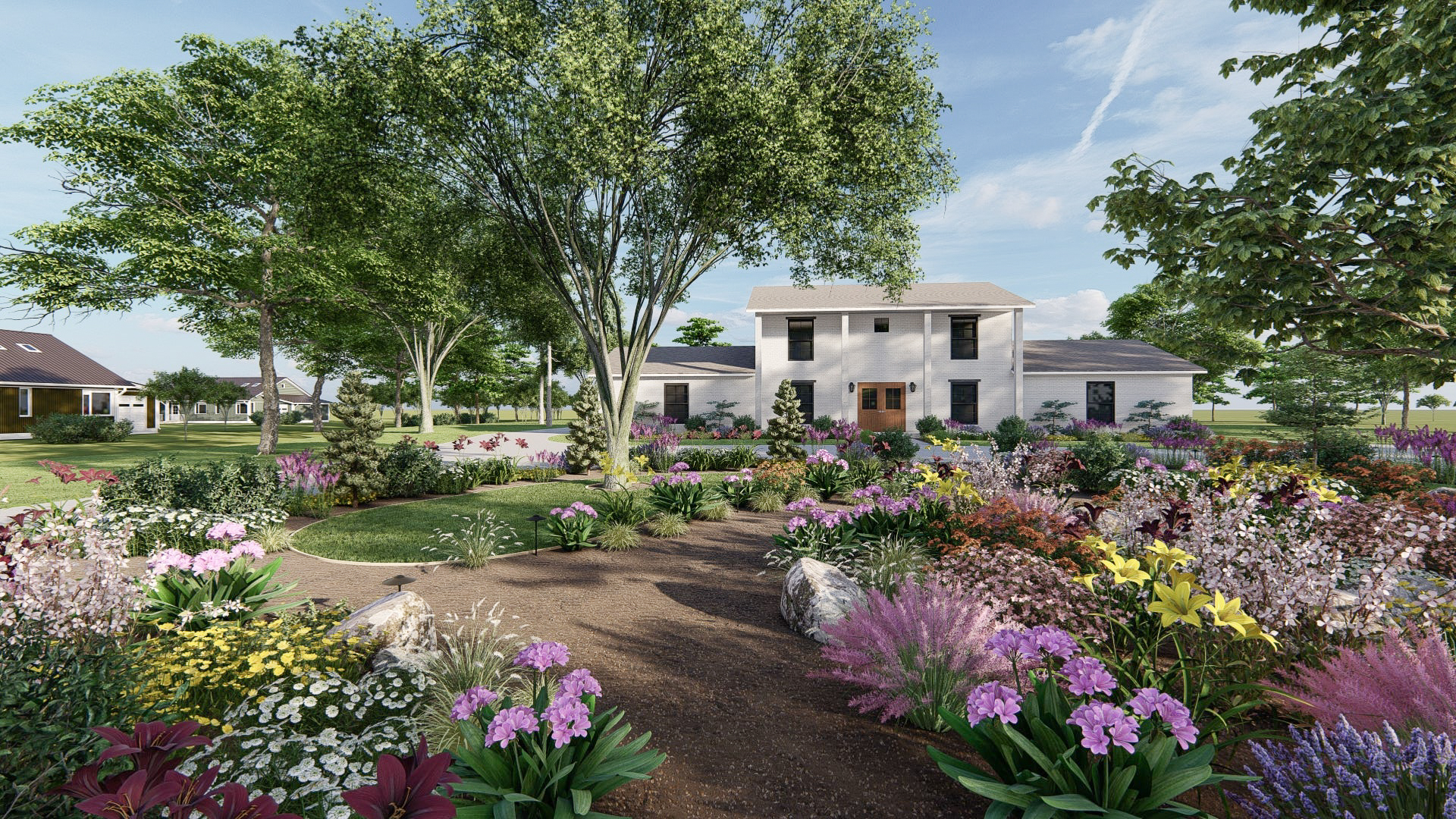
Bees in the garden—most don’t sting!
If you’ve ever been stung by a bee, it’s easy to understand why you’d want to minimize the chances of another incident. However, there are several things to keep in mind regarding this important group of pollinators:
- 90% of North American bee species are solitary, meaning they do not form hives or have social relationships with other members of their species. With no hive to defend, solitary bees rarely sting
- Bees in the garden are usually focused on gathering nectar and pollen, and will only sting if provoked
- Females of some species and all male bees cannot sting
- Stinging behavior is more typical of imported European honeybees, who will sting in defense of their hive
- Bee stings are sometimes attributed to yellow jackets, which may have a similar body shape and coloration
- In the case of a severe allergy or phobia, bee-attracting plants may be located further away from walkways and outdoor gathering areas in order to minimize run-ins with bees
On balance, bees perform an invaluable ecological role and there is little need to avoid attracting them to your garden.
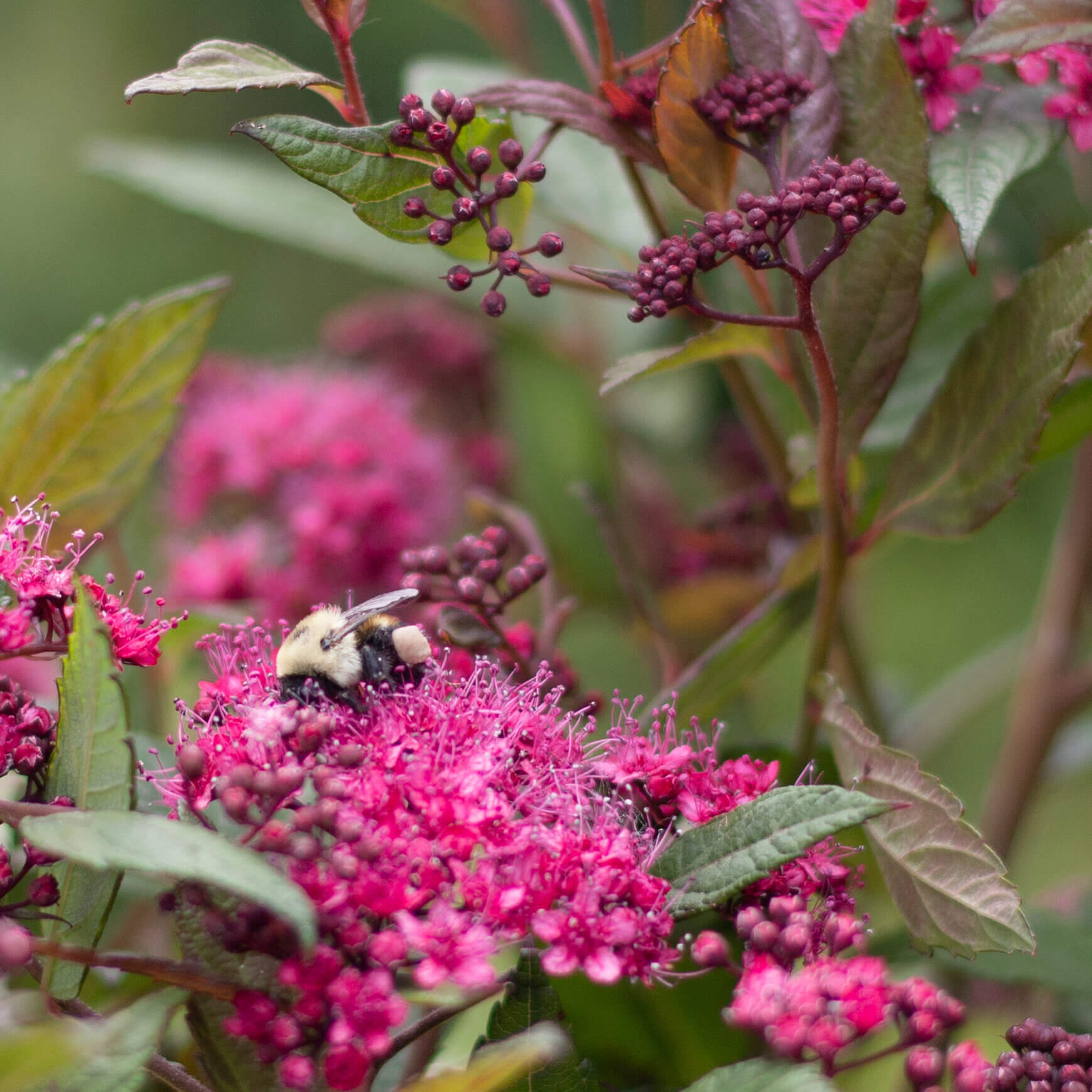

The birds and the butterflies
Caterpillar host plants are an oft-overlooked component of pollinator-friendly gardens. While adult butterflies feed exclusively on nectar, their caterpillars rely on leaves and other soft plant tissues while they grow. To attract beautiful adult butterflies to your garden, provide host plants for their young.
Entomologist and author, Dr. Doug Tallamy’s, work has shown that native plants host more species of caterpillars than non-natives. A native oak tree, for example, may host over 500 different species, compared to the non-native ginkgo’s paltry five.
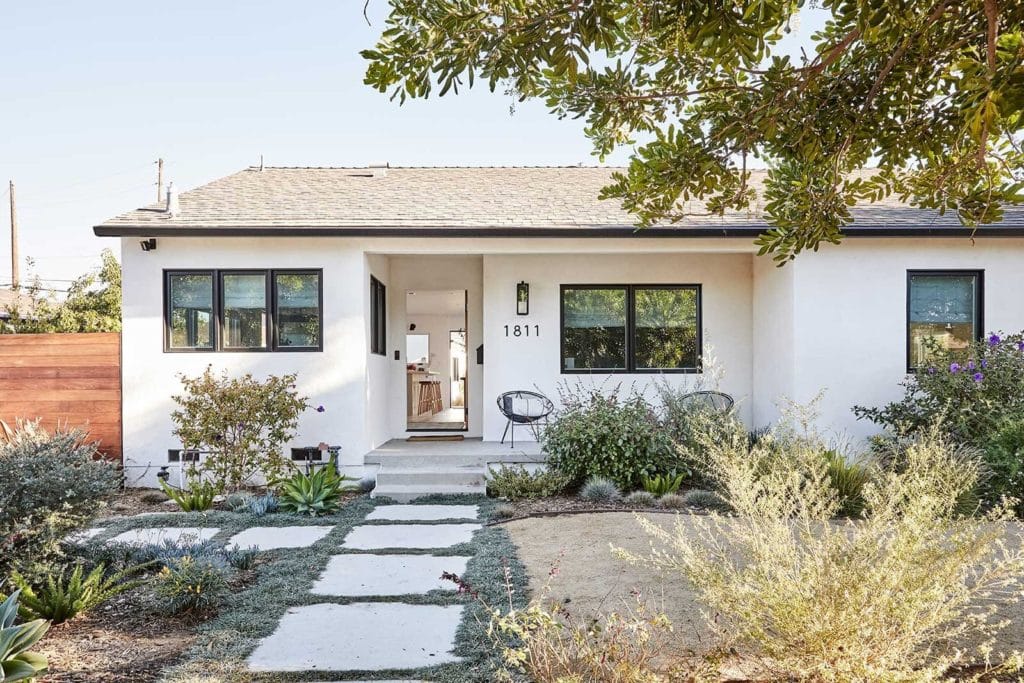
Pro Tip: Native caterpillars rarely cause significant enough damage to harm most perennial plants irreparably. This is an example of the delicate evolutionary balance that has been struck between native plants and their pollinators.
Insects, including butterflies and other pollinators, are the foundation of all land-based food webs. Birds, in particular, rely on soft-bodied caterpillars to feed their chicks (96% of terrestrial North American bird species rear their young on caterpillars.
Making your garden hospitable to pollinators will help connect your outdoor space to nature. Increasing their presence in your garden can have a cascade effect and make your yard a hub for local songbirds and other wildlife.
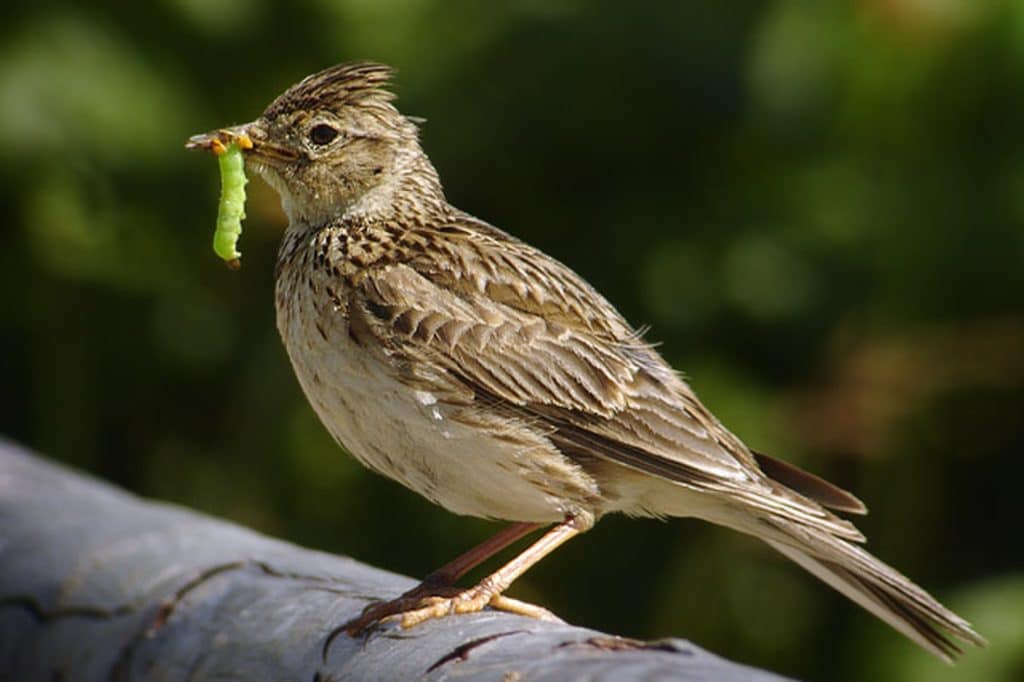
Other ways to provide habitat for pollinators
While creating foraging opportunities is perhaps the most obvious way to attract adult pollinators, it’s also important to provide habitat for their other life stages. This means providing water, shelter, and nesting sites, as well.
A shallow birdbath or saucer will provide a cooling sip of water, and may also invite a butterfly behavior known as puddling where (usually) the males extract dissolved salts from water to aid in reproduction. If mosquitos are a concern with standing water, the organic insecticide Bti (derived from the bacterium Bacillus thuringiensis subspecies israelensis) may be used. Bti has a very narrow range of activity and only affects mosquitos, fungus gnats, and blackflies.

Butterflies and moths also appreciate places to bask in the sun. A thoughtfully placed flat rock can provide the perfect spot to catch some rays.
Leave patches of open, unmulched ground accessible for the 70% of native bee species that are ground-dwelling. These solitary bees prefer to dig shallow burrows in well-drained soil to use as nesting sites.

The other 30% of solitary bees use abandoned beetle tunnels or hollow stems to create nesting chambers. Consider leaving spent flower stalks and other thick perennial stems untrimmed until the following spring to allow overwintering bee larvae to emerge. If stems must be cut, they can be tied in bundles and set aside standing upright in a protected area of the garden.
“Mason bee houses” or “bee hotels” are widely available to purchase or DIY and while these may seem like an easy way to provide nest sites for solitary bees, improperly constructed or maintained ones can be a death trap. If using bee hotels in your garden, be sure to clean them out regularly to avoid a build-up of parasitic mites. Entomologist, Colin Purrington, describes how to build and manage a safe mason bee hotel here.


General design tips for a pollinator garden
Something to keep in mind for your garden plan—insects rely on the sun for both orientation and to warm their bodies, so an open location that receives full sun is the best spot for most pollinator forage plants.
Many pollinators, especially pollen specialists, prefer to visit flowers of just one species during each forage outing. Plant pollinator-friendly species in swaths (rather than individual plants) to help them do this more efficiently.
If space is limited, consider planting a native species with a specialist pollinator relationship. Dr. Tallamy points out that native species that cater to specialist pollinators will often do double duty by attracting generalists, as well.
If sun exposure is a limiting factor, use shade-loving plants to add pollinator habitat. Once again, look to native species such as foamflower (Tiarella), cranesbill (Geranium), bleeding-hearts (Dicentra), and columbine (Aquilegia) for the greatest ecological value. Better yet, convert existing non-native plantings in sunny areas to native ones!

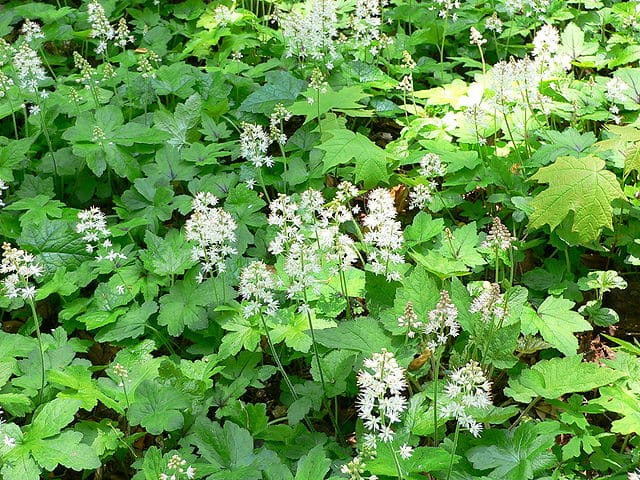
Pro Tip: Consider converting an underutilized lawn to pollinator habitat. Reducing lawn area is a great way to reduce maintenance, water, and fertilizer use, as well as to be more health- and eco-friendly (emissions from gas-powered lawn and garden care equipment are a significant source of carcinogenic compounds, particulate matter, and greenhouse gasses). Many local municipalities also offer lawn conversion rebates as an incentive.

Recap:
- Insect pollinators are a crucial contributor to local and worldwide food crop production.
- Pollinators themselves are critical to local food webs.
- Most pollinators are specialists, visiting just a few (or one) plant species. They require their host plant to complete their life cycle.
- Native plants provide the most ecological value in the pollinator-friendly garden.
- Floral attributes (color, shape, scent, bloom time) can appeal to different pollinators.
- To attract the widest range of pollinators to your garden, plant for an extended bloom season, plant in drifts, and leave some areas of the garden “wild.”
- While floral resources are important for adult pollinators, it is just as important to provide food and shelter for other life stages.
- Reduce or eliminate herbicide and pesticide use, including avoiding nursery plants that may have been treated with neonicotinoids and other systemic pesticides.

Additional resources on pollinators:
General info: https://www.xerces.org/pollinator-conservation/about-pollinators
Native bees: https://www.xerces.org/endangered-species/wild-bees
Butterflies: https://www.nwf.org/Garden-for-Wildlife/Wildlife/Attracting-Butterflies
Ecoregional plant guides: https://www.pollinator.org/guides
Native plant finder: https://www.nwf.org/nativeplantfinder
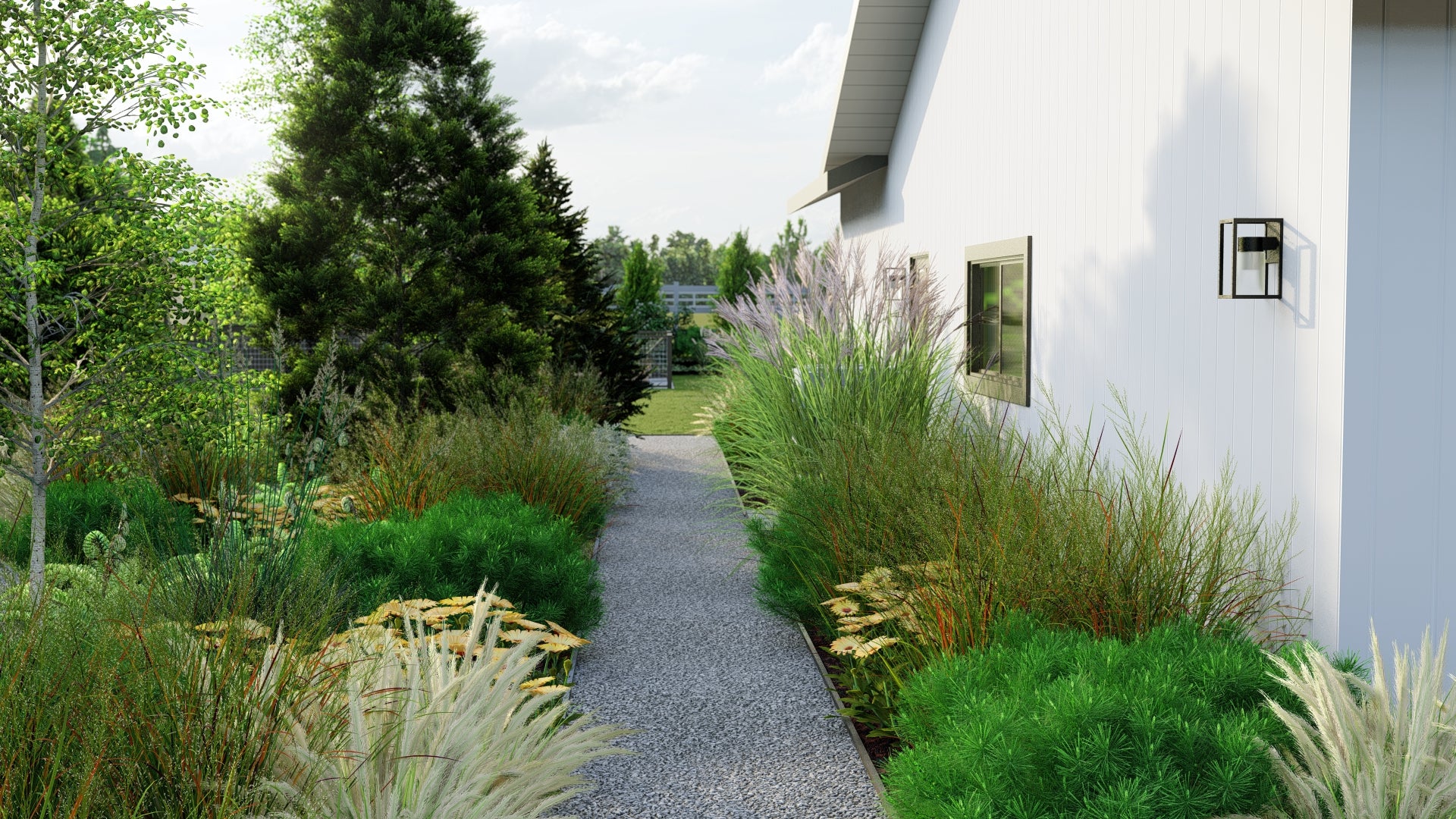
Get started with your pollinator-friendly landscape design by Yardzen!
The most effective strategies to use in your outdoor space will depend on several factors, including site conditions (sun/shade patterns, soil type), the types of pollinators you’d like to attract, and of course personal preferences such as flower color.
Our design process begins with interactive quizzes and an onboarding process where we gather information to understand your space, your aesthetic preferences, and a discussion of your budget and vision to minimize surprises when it comes time to build.
Our top-notch designers then develop a personalized vision for your yard, shared through 3D renderings, 2D plan drawings, and plant and material lists. Your design will capture the look, feel, and function you are hoping for, all while keeping costs within range.

Once your design is complete, we’ll help you connect with a local contractor from our Pro Network of vetted professional landscapers to install your new design.
Clients are also invited to participate in The American Rewilding Project—Yardzen’s initiative to support biodiversity and healthy ecosystems through the use of climate-adapted and habitat-supporting and pollinator-friendly plants. Nearly 90% of clients choose to participate—a definite win for local pollinators and wildlife.
Ready to get started? Click here to select an appropriate design package and take one step closer to your new pollinator-friendly garden paradise!
Featured Articles
3 reasons you should consider native plants in your landscape design

Guide to Drought Tolerant Landscaping: What, Why, and How
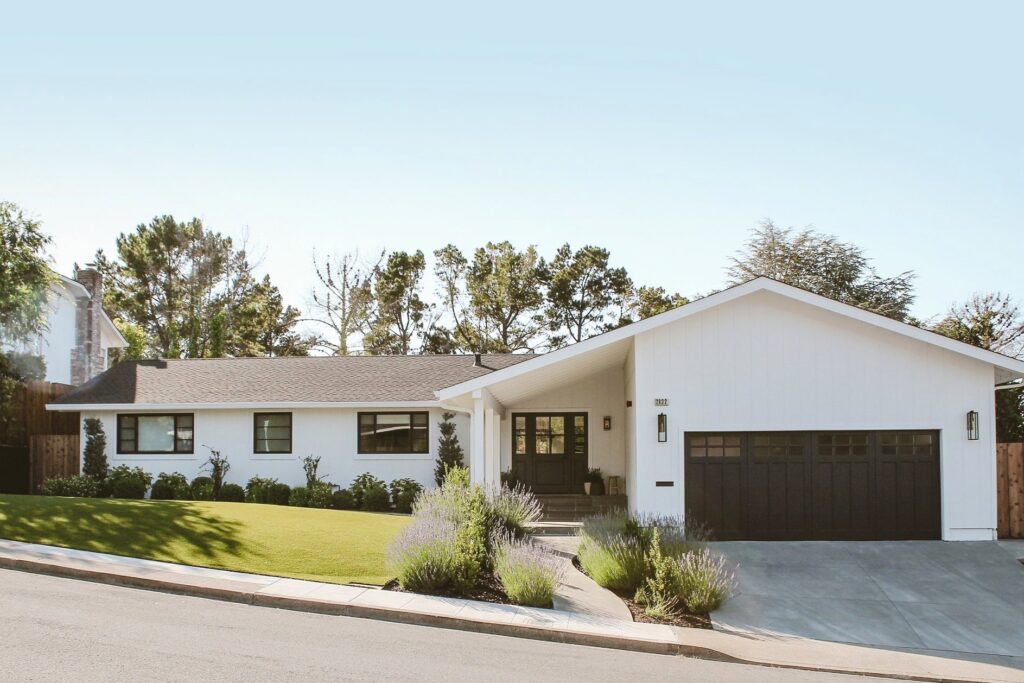
Easy Ways to Turn Your Yard into a Sustainable Landscape

Rewilding Your Yard: Ideas and Inspiration for Homeowners

